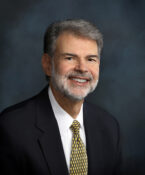Managing the emotional impact of isolation in remote work
By David Farmer, PhD, LPC, LMFT, Director of Interprofessional Education and Practice at HSC
 There are many people working from home while others are in self-quarantine – can both groups face isolation issues?
There are many people working from home while others are in self-quarantine – can both groups face isolation issues?
Whether working from home or participating in self quarantine, geographic distance is created, separating us from our familiar work environment and supportive work relationships. It’s often the strong sense of comradery and friendship we’ve developed with our work colleagues that makes the difficult times at work and in life tolerable. Separation often leads to feelings of isolation that can be heightened in an environment of social distancing. Being quarantined may add to those feelings of isolation even felt rejection, at a time when a person may need acceptance the most. This may be escalated for those who live alone or are in a caretaking role for another family member.
What are ways that isolation manifests itself?
Isolation may initially manifest as feelings of loneliness. Some alone time can be good, but for many, life energy is generated by being with and relating to others. To suddenly be thrown into an environment in which social distancing is the norm can be quite distressing. Without appropriate support whether under self-quarantine or remotely working from home, individuals may feel abandoned and rejected. Prolonged loneliness can grow into depression and anxiety generating feelings of hopelessness and despair. For those who enjoy collaboration and teamwork, the absence of collocated work colleagues may decrease innovation, productivity and overall work satisfaction. It’s part of why people keep congregating despite stern warnings about social distancing.
What can people do to beat it?
Be creative in maintaining work and social relationships! In a world of over 7 billion people, it’s still possible to feel isolated. Luckily, we live in a world of digital innovation, with a wealth of communication mediums available to support relationship building and maintenance. Take advantage of social interaction platforms like Zoom, Skype and Face Time to foster teamwork communication and collaboration. Though with remote work we can’t just pop into our colleague’s office, we can schedule video conferencing with the whole team or individual team members. It’s tempting to roll out of bed and start work without the typical focus on personal appearance associated with going into the office. When video conferencing, the luxury of turning off the video may support isolation. Next time you are on a video conference pay attention to the difference in how you feel when hearing the voice of a team member who is showing up as only a name or stagnant picture versus your response to those members with their video on. Get dressed, fix your hair and join the meeting by video. Just like we want everyone to put themselves into an in-person meeting, engage your whole self in the video conferencing. Make sure to include those who are self-quarantined, let them know that they are a vital part of the team and are not being abandoned by the team due to a virus that we have little to no control over.
Can a sense of panic about the pandemic creep in?
Prolonged stress can develop into distress taking a toll on us both physically and emotionally.
It’s important to be aware of your own individual responses to stress. We often want to connect with like-minded individuals, but it can be helpful to balance your own response with individuals who are complementary to you versus just like you. If you are anxious, try to connect with someone who tends to take a wait-and-see approach or is perhaps more optimistic when facing crisis in life. They often help provide some balance to our overly anxious and pessimistic approach.
Practice focusing on what you can control, more than on what you can’t control. Take the right precautions to protect yourself and others, that’s the best we can do, the rest may be out of our control. Realize that some things in life will change, they have across our lifetimes, but not everything will change, and of what has changed some will be temporary.
Identify what you are believing about the situation and check those beliefs out. In times of anxiety, we may tend to catastrophize things, anticipating the worst possible outcomes. Sharing our thoughts and fears with others can help us reality test those beliefs and helps us to focus on more likely outcomes.
Does watching the news nonstop add to the stress?
Be careful to guard against being bombarded by the constant stream of negative news related to COVID-19. You don’t want to be oblivious to the status of the virus, but enough is enough. Try to limit updates to 1, no more than two per day. Chose a news source that you have found to be balanced and dependable in past major events. Work to avoid the lure to binge on the never-ending news cycle which continuously repeats itself between each update. Avoid receiving your last update right before bedtime which has the potential to interrupt your sleep by feeding anxiety, supporting insomnia and producing troubling dreams.
What about social media?
We’ve already talked about being innovative with your use of video conferencing. Utilize social media to create communities of emotional support and talk about your thoughts and feelings. It’s ok to be afraid. Talking about our fears can be quite cathartic. Avoid the groups that focus on conspiracy theories or overly catastrophize the course of the virus. Look for a community of support that balances the realities of the virus and its impact with hope.
What about households in which multiple people are home working together? Do they face unique stressors?
Households with two or more family members working from home can face some challenges they’ve not been used to. Work styles and preferred work schedules differ, and suddenly working remotely can lead to conflict and family members getting on each other’s nerves. Some people like to start early and find their greatest productivity early in the day. Others start late and work late, finding productivity increase as the day proceeds. Awareness and communication can help set realistic expectations related to remote work. Workspace can be a challenge as well, with family members competing for limited comfortable workspace or electronic equipment. Establish a policy of kindness and patience in communication and behavior. Talk about work-style preferences and needs related to optimal work. Negotiate workspace, trying to create an established workspace for everyone. Identify what will be considered community, non-workspace. Build boundaries or safe spaces where work does not occur, where breaks can be taken without fear of disrupting the work of other family members.
Should people make time to go outside for a while?
Take breaks, go outside and enjoy the absence of a work commute. Take a walk, meditate on things other than work and give yourself a mental break. You’ll be more prepared to return from your break and will likely find greater productivity. It’s important to focus on our emotional and physical well-being during this time of adjustment to a changing world. Isolation and difficulty in adjustment to remote work can promote anxiety and stress that have been shown to have a negative impact on our immune system. Taking care of our emotional and physical well-being can have a positive impact in helping reduce anxiety and stress and positively impact our immune system.
A great resource in dealing with isolation, anxiety and depression in response to COVID-19 is the Anxiety and Depression Association of America at adaa.org.
Read more about COVID-19:
COVID-19: Making the most of hunkering down right now
Student food pantry provides a safety net as COVID-19 pandemic continues
HSC professor among international researchers using stem cells to combat COVID-19 pneumonia
Be a leader, you can stop COVID-19
Should I be concerned about coronavirus? Hear from our experts.
HSC pharmacologist answers questions about potential COVID-19 treatments, vaccines


![Uyen Sa Nguyen Scaled[58]](https://www.unthsc.edu/newsroom/wp-content/uploads/sites/16/Uyen-Sa-Nguyen-scaled58-145x175.jpg)


Social media